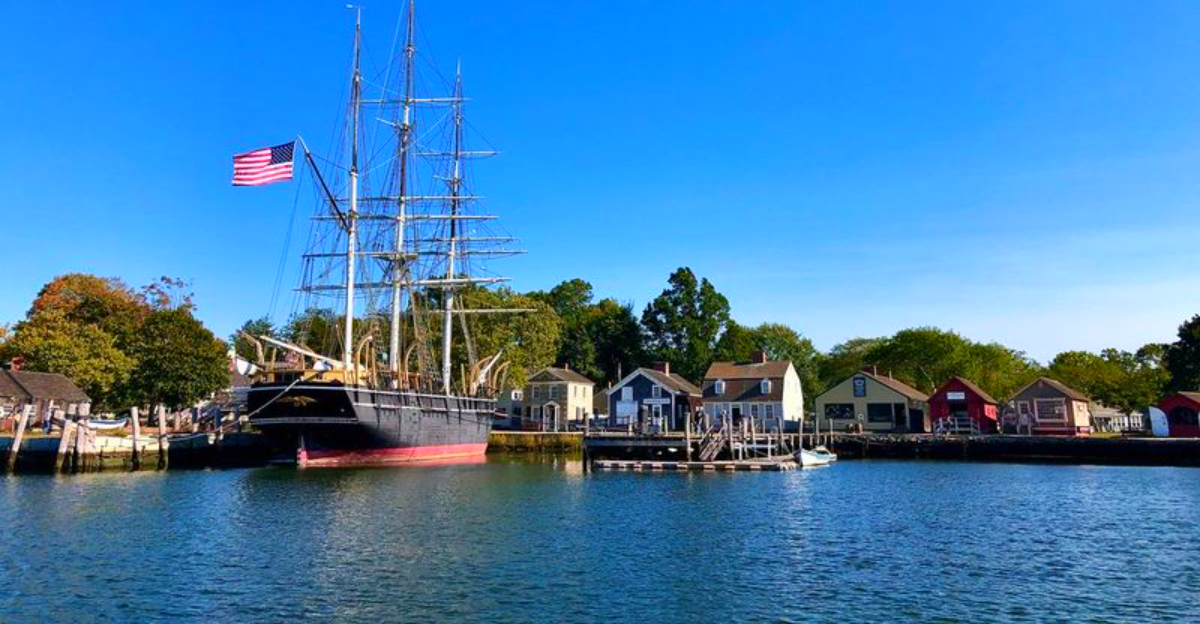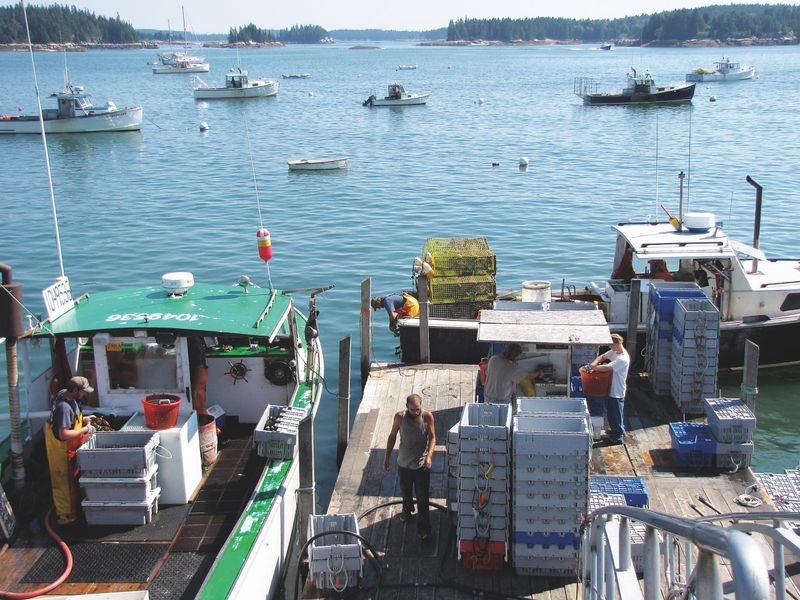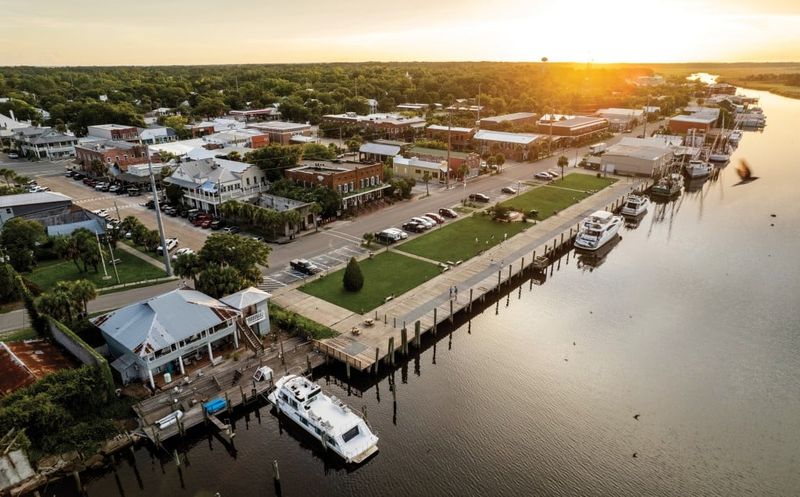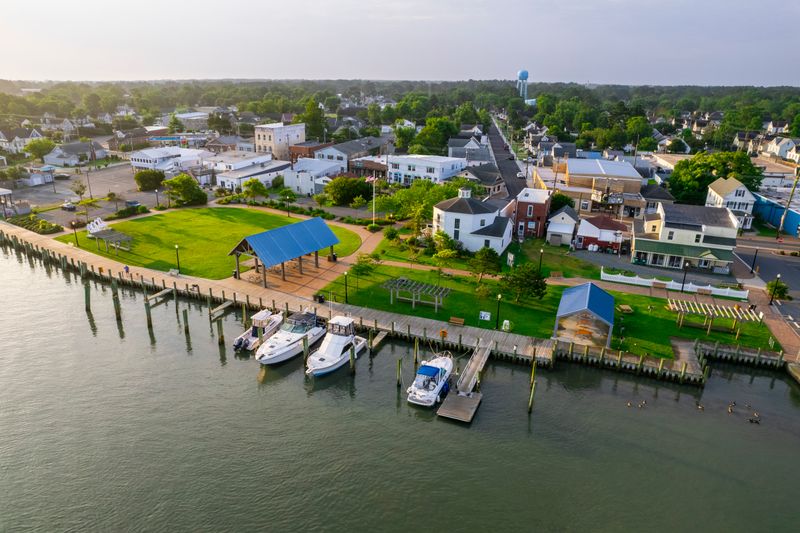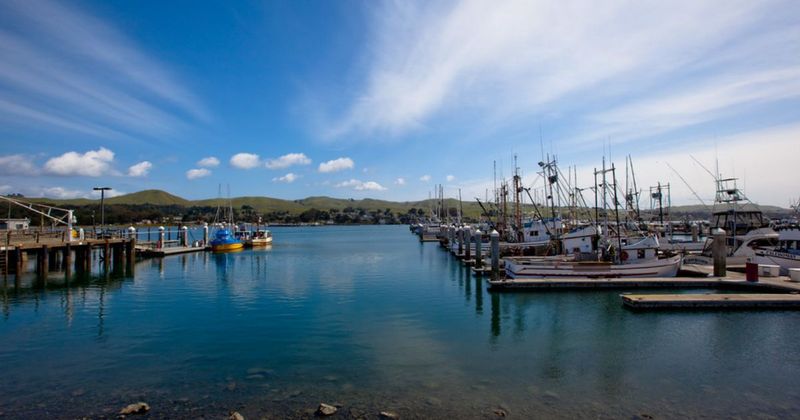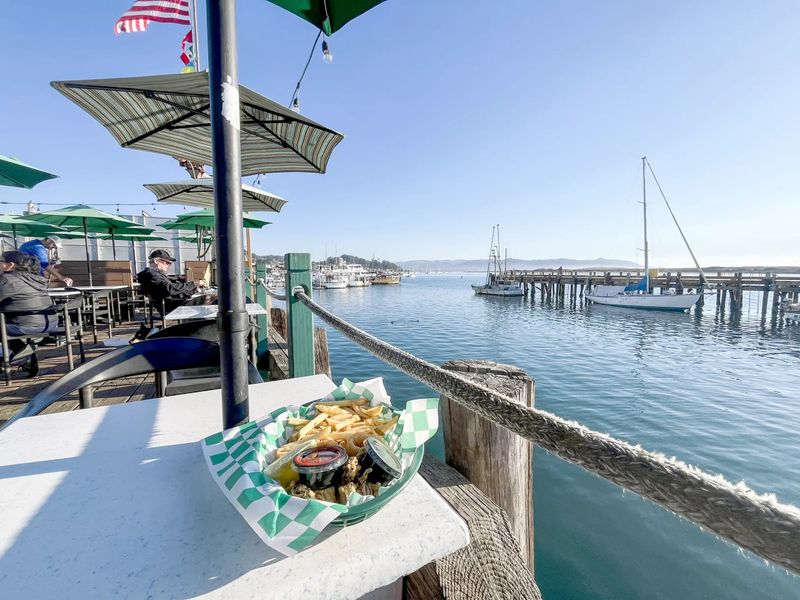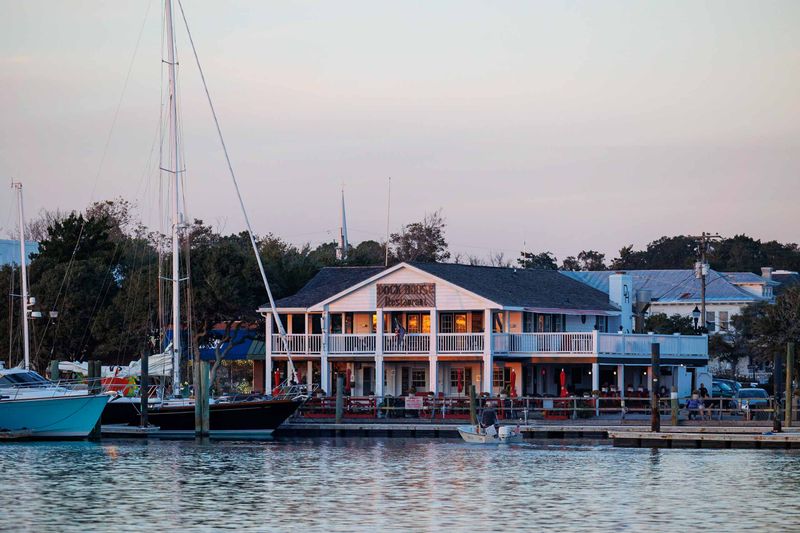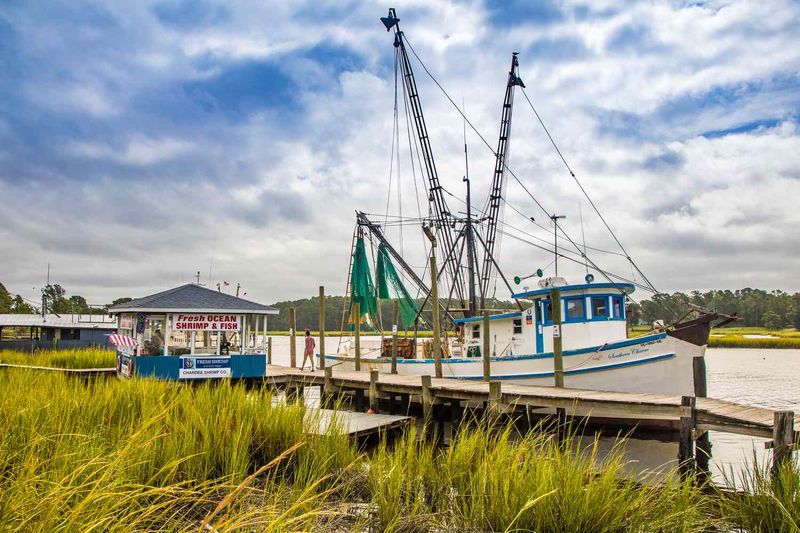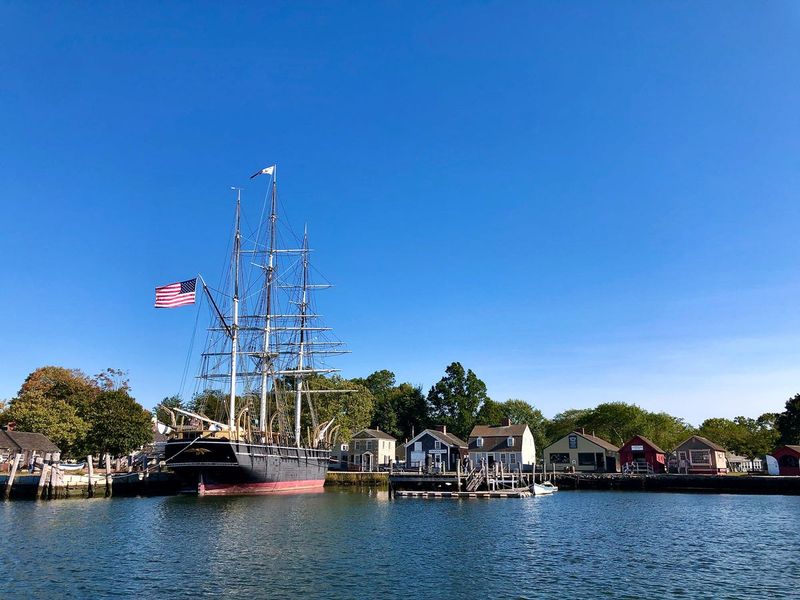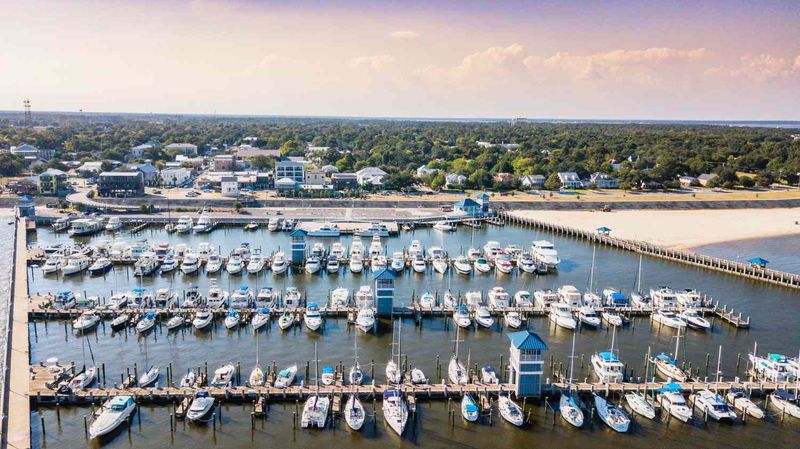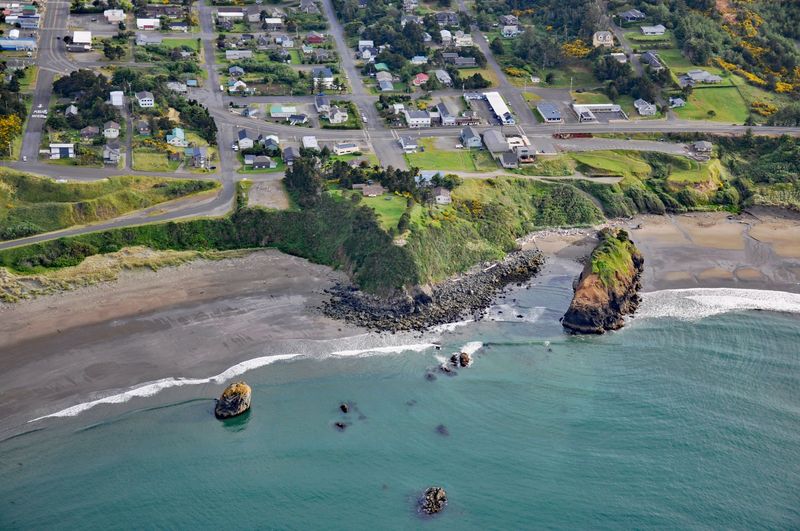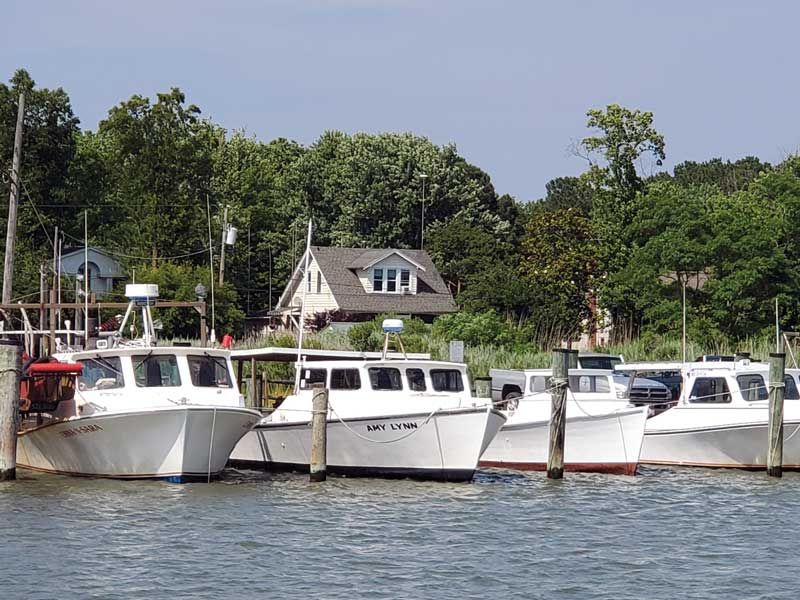Nothing beats the taste of seafood that’s traveled mere feet from boat to plate. Along America’s coastlines, small fishing towns continue centuries-old traditions of harvesting the ocean’s bounty. These waterfront communities offer visitors a chance to experience authentic maritime culture while enjoying the freshest catches possible.
1. Stonington, Maine (Deer Isle)
Lobster traps stack like rustic sculptures along weathered docks where salty captains haul in America’s most productive lobster catch. The bustling Stonington Lobster Co-op lets visitors purchase live crustaceans directly from fishermen who’ve just returned from sea.
Morning fog lifts to reveal a harbor dotted with working boats, their crews methodically sorting the day’s haul. Maine Center for Coastal Fisheries offers educational programs explaining sustainable harvesting practices that have kept this community thriving for generations.
For the ultimate experience, ask locals where to find a traditional lobster bake – these communal feasts celebrate both the town’s maritime heritage and the sweet, tender meat that makes Maine lobster world-famous.
2. Apalachicola, Florida
Oyster shells crunch underfoot along historic waterfront streets where seafood tradition runs deeper than the bay itself. Though wild harvest closed in 2020, Apalachicola’s identity remains inseparably linked to its famed bivalves, with locals eagerly anticipating limited reopening in 2026.
Weathered seafood shacks and upscale restaurants alike showcase the Gulf’s bounty – grouper sandwiches, smoked mullet, and shrimp fresh off the boats. At the maritime museum, oyster tongs and hand-built wooden boats tell stories of generations who’ve worked these waters.
Stroll beneath moss-draped oaks past preserved 19th-century buildings, many housing seafood-centric businesses that remind visitors why this remote Panhandle town became a culinary destination worth the journey.
3. Chincoteague Island, Virginia
Wild ponies may draw tourists initially, but seafood keeps them coming back to this barrier island where watermen harvest treasures from Tom’s Cove daily. Salt-kissed breezes carry the scent of frying fish as you explore the compact downtown where every restaurant proudly serves local oysters and clams.
Fourth-generation shellfish farmers tend underwater gardens visible from shore, nurturing the briny, sweet bivalves that made this region famous. Kayakers paddle past working boats bringing in harvests, sometimes selling direct from deck to dock.
Summer brings the Chincoteague Seafood Festival, where locals prepare traditional Eastern Shore recipes – don’t miss the clam fritters and oyster stew that showcase shellfish literally grown within view of the town’s charming Victorian homes.
4. Bodega Bay, California
Fishermen’s voices echo across misty morning waters as boats return laden with prized Dungeness crab during season. This unpretentious harbor town, made famous by Hitchcock’s ‘The Birds,’ reveals its true character through family-run operations like Spud Point Crab Company, where the owners catch what they sell.
Wooden picnic tables fill with visitors cracking freshly steamed crab while watching pelicans dive nearby. Weekends bring Anello Family Crab & Seafood’s dockside market, where customers point to their preferred catch still glistening from the sea.
Beyond the commercial harbor, rugged headlands and windswept beaches remind visitors of nature’s power in shaping both landscape and livelihood in this working fishing village that feeds San Francisco’s appetite for ocean-fresh delicacies.
5. Morro Bay, California
Massive Morro Rock stands sentinel over a harbor where fishing boats still outnumber pleasure craft. Tognazzini’s Dockside represents the heart of this authentic working waterfront – a place where the staff will proudly tell you which captain on which vessel caught your dinner.
Seals bark from floating docks while pelicans patrol overhead, all part of the working harbor atmosphere that makes dining here an immersive experience. The town’s commitment to sustainable fishing practices shows in carefully managed local catches of rockfish, black cod, and seasonal salmon.
Wander the Embarcadero to watch boats unload their catches, then sample the results at waterfront restaurants where seafood travels just yards from boat to kitchen. Even the fish tacos come with stories of who caught what where.
6. Beaufort, North Carolina
Sailboats and shrimp trawlers share the gentle current of Taylor’s Creek in this 300-year-old maritime community. The Dock House restaurant, a waterfront fixture since 1978, embodies Beaufort’s unpretentious charm with plastic chairs, cold beer, and seafood platters featuring whatever the fleet brought in that morning.
Historic homes face the harbor where fishermen mend nets and clean catches, continuing traditions that predate the town’s quaint boutiques and ice cream shops. Wild horses occasionally appear on nearby islands, visible from dockside tables as you crack into fresh blue crabs.
Locals know to ask what’s running – whether it’s flounder, spot, or the prized Carolina shrimp – rather than ordering from a fixed menu. The best seafood here follows nature’s calendar, not the other way around.
7. Calabash, North Carolina
Fishing nets hang like decorative bunting across the small harbor where the self-proclaimed “Seafood Capital of the World” earns its reputation daily. This tiny town gave birth to a cooking style now famous throughout the Carolinas – the light, crispy Calabash-style seafood fry that transforms flounder, shrimp, and oysters into golden treasures.
Family-run fish houses cluster near the docks, many operated by descendants of the original fishing families who settled here. Their recipes haven’t changed in generations: fresh seafood, a secret batter, and a quick dip in hot oil.
Wooden tables covered in newspaper hold heaping platters while fishing boats visible through salt-streaked windows bring in tomorrow’s catch. No fancy sauces needed – just lemon wedges and homemade tartar sauce for seafood harvested hours earlier.
8. Mystic, Connecticut
Schooners and sailboats share the Mystic River with commercial fishing vessels supplying this historic shipbuilding town’s impressive culinary scene. The award-winning Oyster Club writes its menu daily based on what’s fresh, sustainable, and local – sometimes changing offerings mid-service when new catches arrive.
Nineteenth-century buildings now house ambitious restaurants where chefs maintain close relationships with fishermen working nearby waters. The newly opened Mystic Fish Camp continues this tradition, elevating dock-fresh seafood through wood-fired cooking while maintaining deep connections to local maritime heritage.
Beyond the famed Seaport museum, working boats still navigate the drawbridge at the town center, bringing in Atlantic scallops, flounder, and the celebrated Stonington reds (local shrimp) that grace menus throughout this surprisingly sophisticated small town.
9. Bay St. Louis, Mississippi
“Y’all hungry?” might be the unofficial greeting in this Gulf Coast gem where fishing boats outnumber pleasure craft and seafood markets display the morning’s catch on beds of crushed ice. Hurricane Katrina devastated the waterfront, but resilient locals rebuilt their maritime traditions alongside charming new restaurants.
The Thorny Oyster in Old Town represents the new wave of Gulf cuisine, serving towering raw bar platters and royal red shrimp – the deep-water Gulf delicacy with lobster-like sweetness. Just steps from the beach, chefs work directly with captains to secure the freshest catches.
Weekends bring locals and visitors to waterfront patios where conversations flow as freely as cold beer, all while watching shrimp boats return silhouetted against spectacular Gulf sunsets.
10. Port Orford, Oregon
Pacific swells crash against the headland where Oregon’s most unique fishing port operates without a traditional harbor. Boats here don’t dock – they’re hoisted completely out of the water by massive cranes and set on dollies, creating a distinctive working waterfront unlike any other.
Port Orford Sustainable Seafood runs a community-supported fishery program connecting consumers directly with local boats harvesting albacore tuna, Dungeness crab, and rockfish. Oregon Sea Grant’s “Shop at the Dock” tours teach visitors how to identify the freshest catch and purchase directly from fishermen.
Windswept cedar buildings house simple cafes where blackboard menus change daily based on what’s available. The focus stays firmly on the ocean’s bounty rather than fancy preparation – fresh fish needs little adornment when it’s traveled only yards from boat to kitchen.
11. Tilghman Island, Maryland (Chesapeake Bay)
Across the drawbridge onto this Chesapeake island, time slows to match the rhythms of tides and crab seasons. Weathered watermen still harvest blue crabs and oysters using methods passed down through generations, their workboats departing before dawn and returning laden with the bay’s treasures.
Skipjack sailboats – the last commercial sailing fleet in North America – occasionally still dredge for oysters, maintaining a maritime tradition dating to the 1800s. At Tickler’s Crab Shack, paper-covered tables fill with steamed crabs dusted in Old Bay seasoning, accompanied by cold beer and waterfront views.
Conversations at the docks revolve around water clarity, crab populations, and tomorrow’s weather – the eternal concerns of those whose livelihoods depend on Chesapeake waters that have sustained this tight-knit community for centuries.
